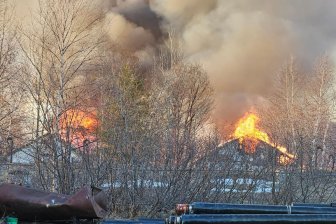Video: Canadian military are investigating another apparent suicide of a soldier — the 4th in just over a week. Global National’s Shirlee Engel reports.

From 1997 to 2012, Sean Stadinsky was a Canadian Forces soldier deployed to the Persian Gulf, Dubai and Afghanistan. Those 16 years of serving Canada changed the trajectory of his life in many ways.
In 2009, he was diagnosed with PTSD. The symptoms were there for years, he says.
“For a long time, there were a lot of indicators. I was angry all the time, I was moody, I didn’t sleep. I was kind of a big ball of madness and anger,” Stadinsky told Global News.
On Dec. 2, Master Cpl. Sylvain Lelievre, from the 3rd battalion of the Royal 22nd Regiment, died on base in Quebec.
This is the fourth apparent Canadian Forces suicide in a week. When tragic news like this takes centre stage, Stadinsky says he reflects on his rocky transition into civilian life.
READ MORE: National Defence releases name of fourth apparent soldier suicide
“It’s a real fear out there for a lot of guys. ‘What am I going to do when I take off my uniform?’ It’s your sense of being, it’s who you are and I took a lot of pride in wearing my uniform,” he said.
Stadinsky, now a master’s student at Queen’s University, said he also makes sure to touch base with his friends who are also former veterans. He urges other veterans to do the same.
Scott Maxwell, executive director of Wounded Warriors Canada, said that during this time, the people he works with and the veterans he helps typically “go quiet.”
“There’s a lot of grief and sorrow associated with this kind of tragedy for those who return from service,” he said.
But there’s a message the national organization that helps thousands of vets wants to relay:
READ MORE: Soldier suicides prompt concerns about military mental health support
A government study conducted last June suggested that 13.5 per cent of Canadian Forces soldiers who served in the Afghan mission have mental health issues linked to their deployment. Dangerous locations – such as Kandahar – were even linked to a higher risk of mental disorders.
READ MORE: Almost 14 per cent of deployed Canadian soldiers face mental disorders: study
PTSD usually appears within the first three months of an event, but sometimes symptoms won’t appear for years, according to the Centre for Addiction and Mental Health.
Victims deal with re-experiencing the traumatic event, they have recurring nightmares, they experience flashbacks and they may isolate themselves from their loved ones and lose interest in activities they used to enjoy.
For Stadinsky, that meant he would avoid shopping at Costco on a Saturday or going anywhere that would draw a crowd.
“The heat really bothered me because it reminded me of the Middle East,” he explained.
Maxwell said that this year, Wounded Warriors has beefed up its funding for mental health programs because of demand from veterans and their families. It offers two growing services that Ottawa doesn’t – therapy through using horses and dogs.
Some veterans with PTSD have trouble with daily tasks – going to the mall, attending a family birthday party or filling out paperwork at the bank.
“It’s being around large groups, loud bangs, noises – triggers that can and do send them back to experiences they had in combat. Anything to help them get through these things, we’re earmarking to fund,” Maxwell said.
READ MORE: Canadians’ stories: Doctor chronicles story of immigration to making history
Then there’s reintegrating into civilian life. Most of the time, this requires changing their skill set to carve a new career path. It’s a daunting task for most Canadians, let alone veterans.
“There’s no direct linkage to what you’ll do next. A lot of people go back to school for retraining but the result and outcome are not clear,” Maxwell said.
Stadinsky went back to school – he’s now completing a master’s degree in industrial relations at Queen’s University. He takes part in veterans’ events, even a Wounded Warriors bike ride that took eight injured veterans from Paris to London last summer.
Former defence minister Peter MacKay said that the government is doing what it can to help veterans.
“It’s absolutely heartbreaking and troubling in the extreme that anyone, soldiers in particular, find themselves in a position that they see no hope and take their own lives,” he said Wednesday.
The government is urging veterans who are struggling to seek help. The Canadian Forces Member Assistance Program has a confidential toll-free telephone advisory and referral service for all military personnel and their families: 1-800-268-7708.
With files from the Canadian Press
carmen.chai@globalnews.ca
Follow @Carmen_Chai



Comments